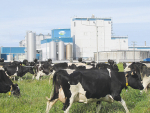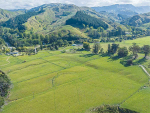Cape Town in South Africa set to soon run out of water is an example of this, says Curtis.
“By ratifying the Paris Agreement in 2016, New Zealand confirmed it would plan for and take action to adapt to the impacts of climate change,” he says.
“Developing more water storage to supply towns and rural communities and for food and energy production is important to protect the future wellbeing of Kiwis.”
A new draft government report, ‘Adapting to Climate Change in New Zealand’, highlights that droughts are expected to occur more often and be more severe, as will rain and floods.
January 2018 was a record hot month in NZ, and in 2017 a shortage or surplus of water caused major problems: severe floods in some regions during autumn and winter, then droughts in spring and summer.
“Many areas went for several weeks with minimal rainfall this summer,” said Curtis. “Where water storage was available it [helped] ensure locally grown produce was still available in supermarkets.
“But a lot of work is needed to improve the resilience of our communities by improving our water storage.”
The 2012–2013 drought affecting the entire North Island and the West Coast also shows the impact climate change could have on NZ’s economy and communities. The Treasury estimates the drought has cost the NZ economy at least $1.5 billion.
NIWA says NZ now gets an average of 550 billion cubic metres of rain each year, of which 80% flows out to sea, supporting river ecosystems along the way; 2% goes for irrigation, urban and industrial use and the rest evaporates.
“Maintaining adequate river flows and river ecosystems is important for our future, so is looking at options to store water,”Curtis says.
“Overseas water storage projects have combined flood protection works with water storage for urban and rural use.
“A range of options is available.
“Projects to recharge underground water supplies through wetlands which provide a habitat for wildlife have also been completed as a cost-effective way of providing water when needed in Europe and America,” Curtis says.
Irrigation schemes can do it
New Zealand's irrigation schemes have other uses.
For example, they supply Timaru, Oamaru and Kerikeri with drinking water and farmers with stock water.
Schemes can be designed to allow river flows to be supplemented in times of low flow.
Andrew Curtis refers to the Government’s intention to honour existing Crown Irrigation Investments Ltd support of irrigation scheme modernisation and development.
“By 2050 our population is expected to reach six million. We’ll need to feed more people from the same land area, and supply water and power to new homes and businesses.”









